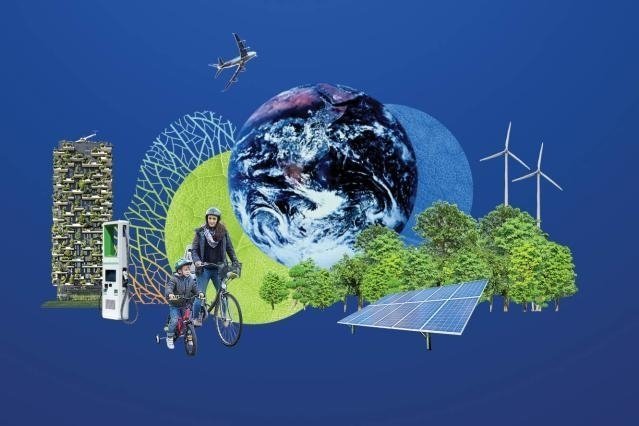A green pact for energy
Currently, the protection of the environment, climate change and the energy transition are subjects taken very seriously by the European Union and the world in general. Indeed, temperatures are constantly rising on the surface of the planet because of greenhouse gases, the oceans, and forests are ravaged. Not to mention the ever-increasing price of energy, which directly affects the lives of millions of people. To address these issues, the EU has launched the “Green Deal”.

What is the European Green Deal?
The Green Deal, or Green Pact, is a set of programs and political decisions of the European Union to reduce the impact of climate change on the planet.
It is in December 2019 that the European executive, and in particular Ursula von der Leyen, presents this project to the MEPs with one idea in mind: to transform the EU into a modern economy, efficient in the use of resources, especially through clean energy, while being competitive.
The Green Pact is a set of policies that will make the EU’s commitments to the climate, the environment and the ecological and economic transition a reality.
The objectives of the EU Green Deal
The main objective of the European Green Deal is to achieve carbon neutrality by 2050.
But it also aims to make European economic growth decoupled from the use of external resources, create jobs and improve the quality of life of citizens.
In June 2021, the EU definitively adopted the European Climate Law, as part of the Green Pact. Set in stone in European legislation, this law defines the goal of carbon neutrality for the EU as well as the intermediate target of 55% greenhouse gas reduction by 2030. Of course, the Green Deal inevitably involves the ecological and energy transition, which will considerably reduce the production of greenhouse gases. The development and even the acceleration of the energy transition is therefore an essential point of the Green Deal. To achieve these objectives, concrete actions are of course necessary.
How is the Green Deal implemented?
To achieve climate neutrality by 2050, the EU is translating its political commitment into European climate legislation. This creates a legal obligation and promotes new investments in clean energy and environmental protection.
In the same vein, the European Commission has adopted several sectoral roadmaps, such as the “transition to sustainability” for SMEs adopted in March 2020, as well as Work Programmes that define the tasks to be accomplished each year.
The European Commission explains that all sectors of the economy are concerned by the Green Deal. The EU has thus committed to mobilizing more than €1,000 billion in sustainable investments over the next decade. These funds will allow in particular:
- Invest in clean and sustainable energy
- Support innovation in industry
- Developing clean, green transportation, both private and public
- Strengthen and create carbon sinks
- Work more closely with international partners to develop environmental standards
- Develop self-generation of energy and improve the energy efficiency of buildings
These investments will also help address rising energy prices and support post-Covid economic recovery.
Focus on energy: energy-efficient renovated buildings
One of the main sectors on which the Green Deal focuses is of course the production of clean, sustainable and efficient energy at the European level. Part of the Green Deal’s strategy is to renovate buildings in order to increase their energy efficiency considerably. SunStyle has been working towards this goal for many years.
The conversion of buildings into energy-efficient buildings allows the creation of positive energy in a self-sufficient manner through the use of solar panels or solar tiles placed directly on the roof of the building. Today, SunStyle’s solar tiles are one of the best solutions on the market. Efficient, durable, aesthetically pleasing and state-of-the-art, these building-integrated photovoltaic (BIPV) tiles are a perfect response to rising energy prices and are directly in line with the Green Deal and the ecological transition.
For more information about SunStyle’s solar roof, visit sunstyle.com
Power your interest in the future of solar roofing by following us:
Instagram @sunstyle_solar
Facebook @sunstylesolar
LinkedIn linkedin.com/company/sunstylesolar
Youtube @youtube channel


